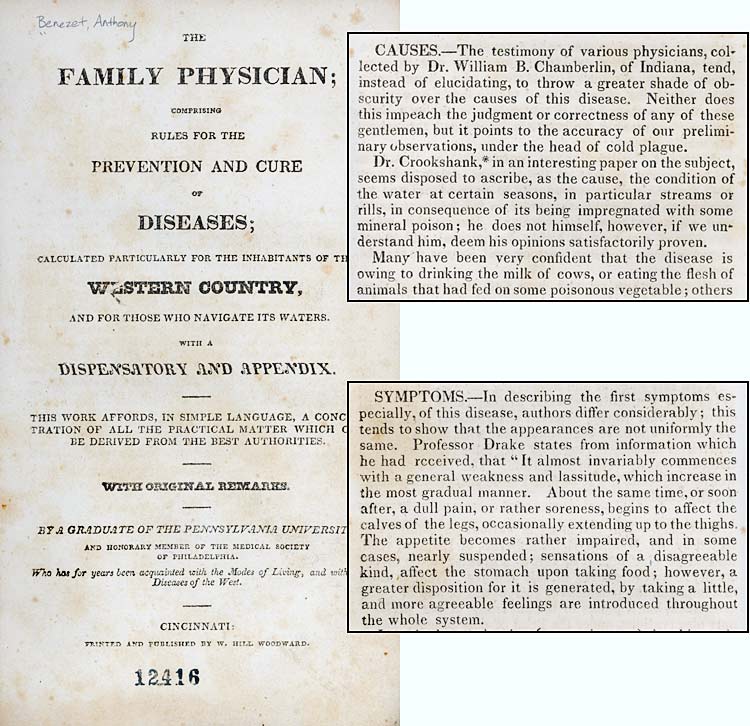On February 18, 1841, the legislature offered a reward of two thousand dollars to anyone "who shall, within five years after the
passage of this act" succeeds in discovering "the true cause of the disease, now known to be caused by the poisonous effects of the
wild, flowering white snakeroot transmitted by the milk, butter, and flesh of cattle consuming the plant. Milk sickness had become
a scourge in early Kentucky and nearby states, having claimed the lives of many settlers, including Abraham Lincoln's mother.
Those claiming to have made this discovery were required to submit to experimental verification by a panel of thirty-four physicians
selected by the legislature from twenty counties. Daviess County was represented by four physicians, while Hancock and Hopkins counties
were represented by three each. If two or more people were to offer the same correct explanation, the first person to make the submission
was to be granted the reward.

Pages from The Family Physician; comprising rules for the prevention and cure of diseases; . . . Anthony Benezet, c.1826. Milk sickness was first diagnosed by Dr. Thomas Barbee of Bourbon County, Kentucky, in 1809. Variously described as "the trembles," "the slows," or the illness "under which man turns sick and his domestic animals tremble," it was a frequent cause of illness and death, sometimes killing as many as half the people in a particular settlement. Perhaps the most well-known victim of the sickness was Abraham Lincoln's mother, Nancy Hanks Lincoln. This 1826 publication discusses the symptoms of, and suggested cures for, milk sickness, and quotes Drs. Daniel Drake and Thomas Barbee among other physicians. However, science did not officially recognize the white snakeroot plant as the cause of milk sickness until 1928, although anecdotal evidence and legend points to Dr. Anna Pierce Hobbs Bigsby (1808-1869) as the first to discover the cause of the disease. Kentucky Historical Collections.
